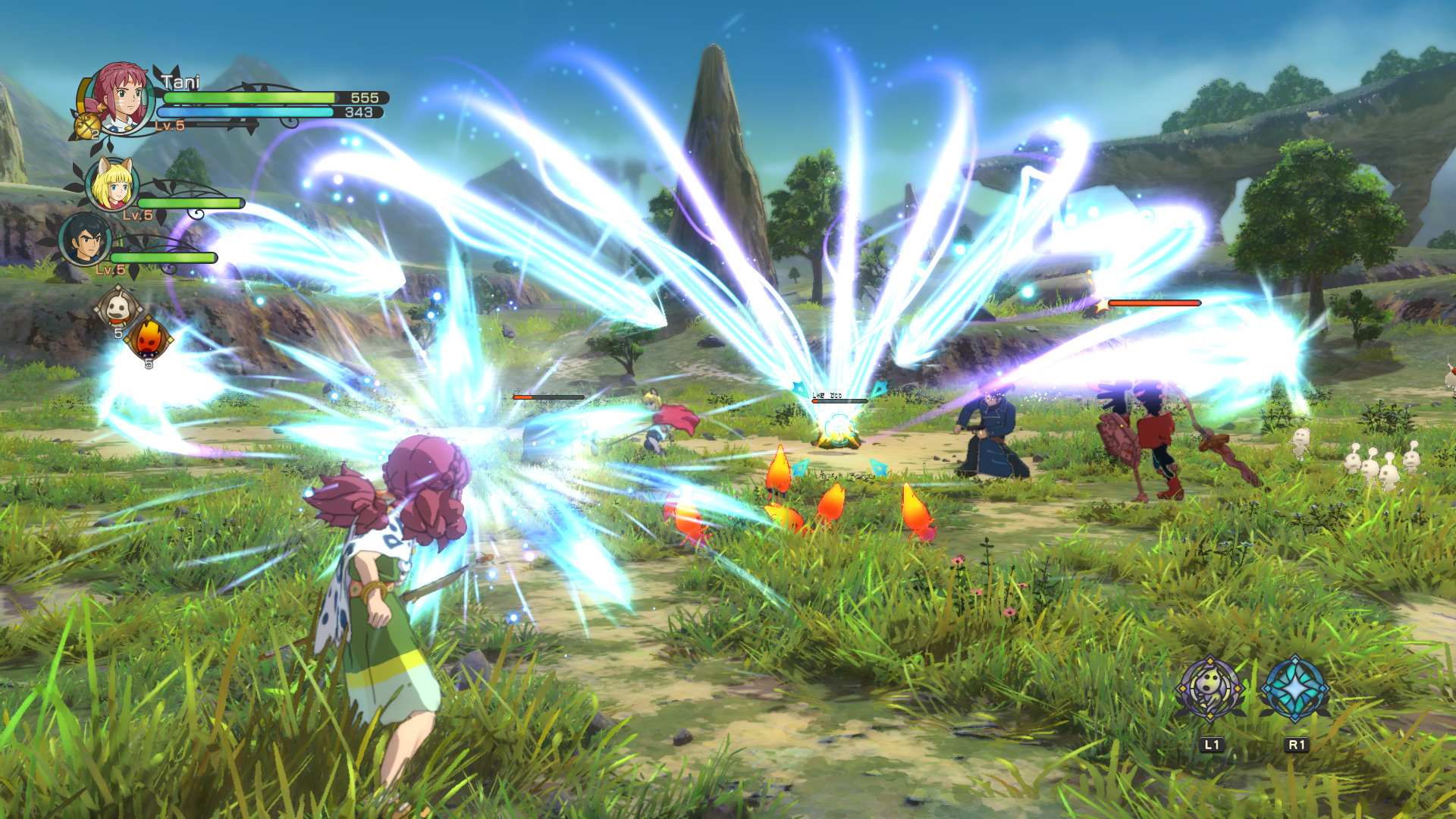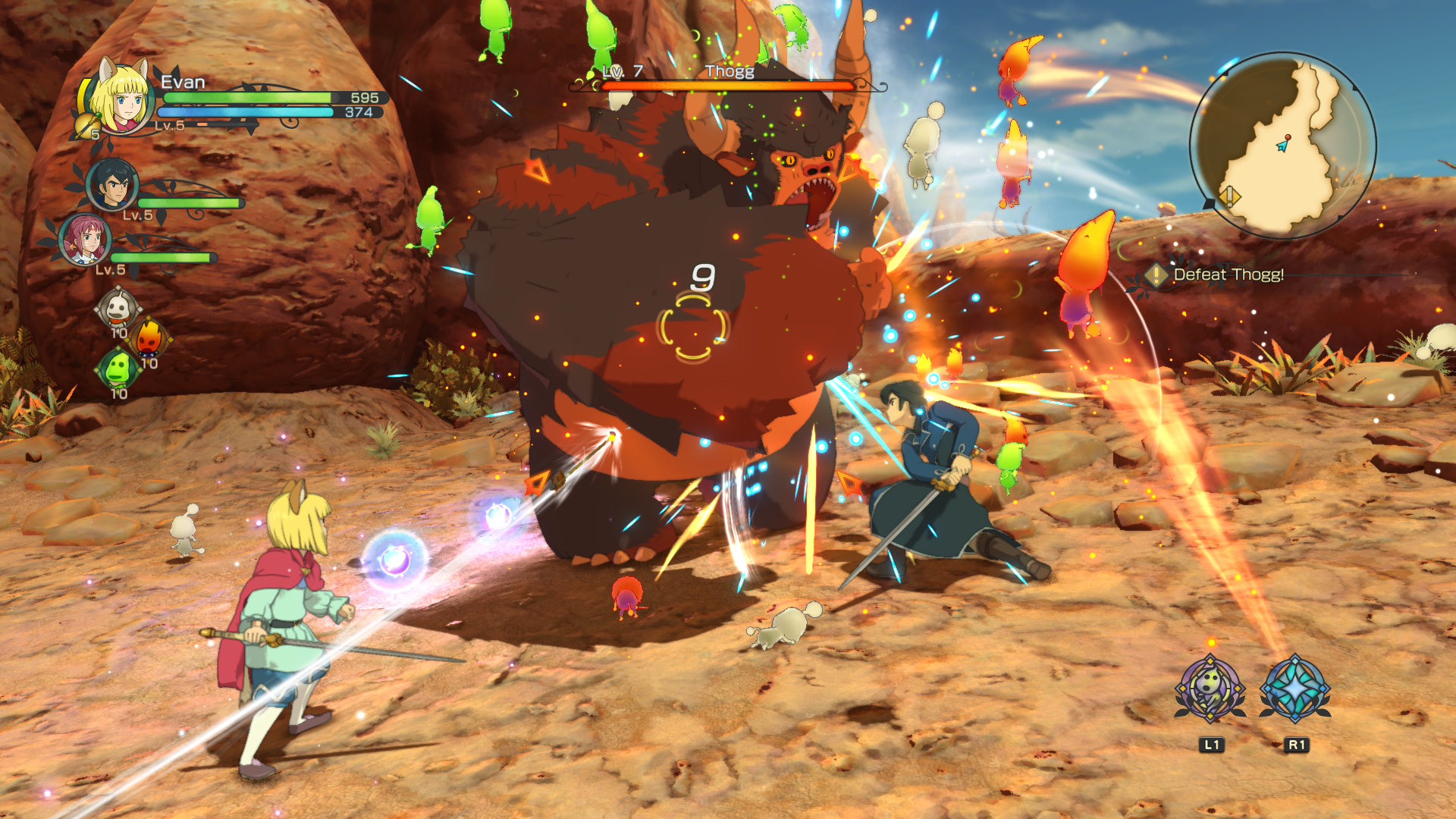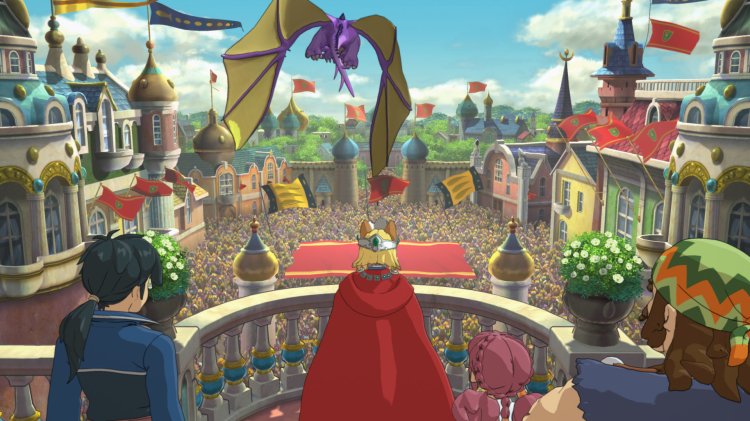The first Ni no Kuni dazzled players with its bright, cartoon-like graphics. Ni no Kuni II: Revenant Kingdom is keeping the beautiful art, but it’s bringing a lot of changes to the original’s role-playing game mechanics.
Ni no Kuni II is coming out on November 10 for PlayStation 4 and PC. The first Ni no Kuni was a hit on the PlayStation 3, shipping over 1 million copies. Along with the beautiful art, it had gameplay similar to the Pokémon series. You captured monsters and had them fight for you. They could even grow into more powerful creatures after enough training. The sequel is doing away with all of that.
Instead, you fight by controlling only the human (or human-ish, considering the main hero’s animal ears) characters. You’ll still have small creatures running around the map helping you during combat — the Pikmin-eque Higgledies — but you have no direct means of controlling them.
At the Electronic Entertainment Expo in Los Angeles earlier this month, I interviewed Ni no Kuni II director Akihiro Hino about this and other changes that Level-5, the studio behind the series, is making for this RPG sequel.
June 5th: The AI Audit in NYC
Join us next week in NYC to engage with top executive leaders, delving into strategies for auditing AI models to ensure fairness, optimal performance, and ethical compliance across diverse organizations. Secure your attendance for this exclusive invite-only event.

Above: A battle in Ni No Kuni II.
GamesBeat: The first Ni no Kuni had the familiar system, a Pokémon-esque mechanic that had players capturing and raising creatures to fight for them. Is that gone in the sequel?
Akihiro Hino: In lieu of the familiar system in Ni no Kuni, there are little sprite spirits called Higgledies in Ni no Kuni II. How they function — they’ll be your support in combat. Depending on how you use them, whether it’s in a boss battle or for the weaker mobs, it’ll change the course of combat. It adds a lot of strategy to how you use them in battle.
GamesBeat: A lot of people would have expected a sequel that looked a lot more like the original Ni no Kuni. Why was it important to you to change things up and add so many new elements?
Hino: At Level-5 we have a number of different series and franchises under our belts. Some of them have gone into five or six installments. Over time we’ve noticed a trend — when you release a lot of games with similar systems or mechanics, at some point the consumer is going to decide it’s all just the same. We’ve learned that when you’re developing each single piece of entertainment, you need to deliver new experiences no matter what franchise you’re dealing with. A large part of our philosophy at Level-5 now is always challenging ourselves, always challenging our form of expression, and delivering a fresh experience to the consumer.

Above: A boss in Ni No Kuni II.
GamesBeat: Ni no Kuni also had a lot of switching between the real world and the fantasy world. What led you to move purely into the fantasy setting?
Hino: As you say, most of the story takes place in the fantasy world, but that doesn’t mean necessarily that the real world has disappeared entirely. That being said, there are many other mechanics that add to the player experience, like a kingdom-building system. We wanted to keep the focus more on what happens in the fantasy world. Players will have to build and nurture their own kingdom there from scratch.
GamesBeat: Is the kingdom mechanic just a menu-based system, or is it actually a place you can go to in the game, a hub of sorts?
Hino: Yes, there will be visual cues around the kingdom’s growth. As you make improvements and bring back resources, you’ll see how the kingdom is evolving. But as opposed to just watching a building come up from the ground, it’s more like you’re helping to shape the specs and the personality of your kingdom. Depending on who you assign to what post in your little society, that’ll greatly affect how your kingdom grows. Depending on what types of facilities you build or what people you assign to posts, it’ll change the weapons or items you’ll have access to, which then affects how your adventure goes.

Above: Walking around in Ni No Kuni II’s world map.
GamesBeat: Another thing I noticed in the presentation were some gameplay sequences where characters were smaller. The gameplay seemed a little different, too. What component of the game were we seeing there?
Hino: That takes place on the world map. We’ve chosen to go for a very “diorama” type of expression on the world map, where each character is represented by a “piece,” if you will, on top of the larger map. Also, one mechanic that takes place on the world map — as you grow as a king, there are instances where you have to lead your troops. Expressing the leader of a massive army with this chibi-styled character helps open up the imagination – you see it and think, “Wow, he’s leading a whole army on top of the world map.”
GamesBeat: A big part of the reception for Ni no Kuni involved how beautiful the game was, including the artwork, the music. Is it harder to wow people again with a sequel?
Hino: Developing this with the PlayStation 4 in mind from the start, on a visual level we needed to be extremely careful with how we wanted to express certain things and improve the resources dedicated to the art department. But also, we never wanted to forget that it’s a game, and it needs to be fun as a game. In the gameplay cycle, kingdom-building is going to play a very large role. In a normal RPG you’d traverse dungeons, collect items, find resources, improve your weapons, and move on to harder dungeons.
We replace a lot of that with the kingdom mechanic, where you’re collecting not only resources, but also characters in towns that you can assign to different posts in the kingdom. The materials you collect will also contribute to building better facilities, which in turn expand where you can go in the game.


